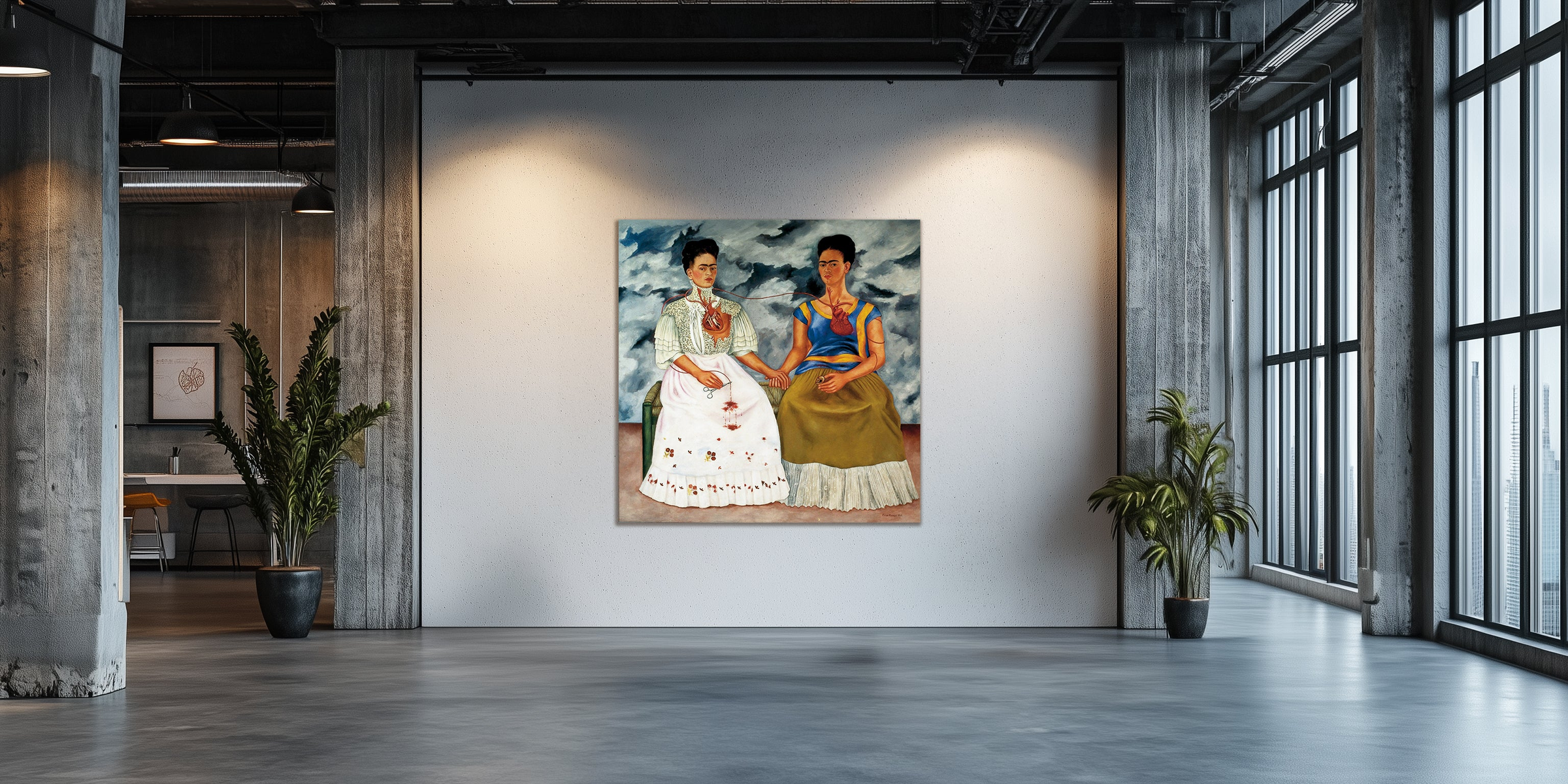
Frida Kahlo
Frida Kahlo, born on July 6, 1907, at Londres number 247, in Coyoacán, Mexico, where the "Frida Kahlo Museum," better known as the "Blue House," is now located.
Magdalena Carmen Frida (Frida Kahlo) was baptized and later married Diego Rivera at the San Juan Bautista parish, an eleven-minute walk from her birthplace. One of the most emblematic painters of the 20th century, known for her self-portraits and works that reflect her personal pain and suffering, she was also a lover of her neighborhood and parish in the vast and populous Mexico City.
From an early age, Kahlo faced numerous adversities, polio at six years old and at eighteen, a severe bus accident that left her with permanent physical injuries, such as, it is believed, the difficulty in carrying her four pregnancies to term, unleashing in her a lifelong anguish and discomfort. Her tumultuous relationship with the famous muralist Diego Rivera also had a significant impact on her life and career.
The artistic movement that most influenced Frida Kahlo was surrealism, although she did not consider herself part of this movement. Her paintings, however, frequently explore themes of fantasy, symbolism, and the unconscious, characteristics of surrealism. André Breton, one of the founders of surrealism, described her work as a "ribbon around a bomb."
Kahlo influenced later artistic movements and numerous artists. Leonora Carrington and Remedios Varo are two painters close to Kahlo, sharing with her not only the adopted Mexican nationality but also a surrealist approach in their art.
Frida Kahlo’s art is distinguished by its raw and visceral depiction of suffering (brutally reminiscent of the work of the German artist Otto Dix after the Second World War) employing elements of Mexican culture alongside her own personal iconography. Her self-portraits are renowned for revealing both her physical and emotional pain.
Kahlo used her art to explore and articulate her anxieties, her suffering, and the profound dissonance she experienced between the life she had lived and the life she believed she should have lived. This unique combination of personal and cultural themes renders her works deeply striking, moving, and universal.
